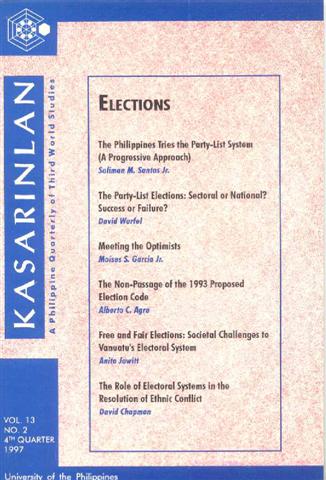The Party-list System: Sectoral or National? Success or Failure?
Abstract
Some view the party-list system as the best hope for a system that will finally address the needs and concerns of the country's neglected and marginalized sectors. It is even brandished by the government as the cure to the cancer of traditional politics and politicians. Others, however, are reluctant to pin their hopes on the party-list system for a good reason. Although a more than sufficient number of groups, organizations and parties have expressed interest in the system, the fact remains that very few would-be voters, including some in the Commission on Elections (COMELEC), actually know about it. Even fewer actually understand what it is or how it works. Blamed, as usual, are the lawmakers and the Commission. The Party-List Act begins by carefully distinguishing the concepts of "parties" and "sectors" and "regional" and "national" but recklessly obliterates the distinctions in the latter portions of the law. The law also disqualifies the five largest parties from individual participation, in order to level the field, only to allow the same to participate anyway through a coalition loophole. The solons accidentally or deliberately left the door open for manipulation and confusion while protecting their interests. The COMELEC has likewise failed to inform the voters about the party-list mechanics and to provide a reasonably tamper-proof counting system that can withstand the return of the dreaded dagdag-bawas. In theory, the party-list system offers a better alternative but it must first get past the trapo system that is bent on self-preservation and survive a COMELEC that is consistently getting better at creating more problems than solutions.
Published
2007-10-10
How to Cite
WURFEL, David.
The Party-list System: Sectoral or National? Success or Failure?.
Kasarinlan: Philippine Journal of Third World Studies, [S.l.], v. 13, n. 2, p. 19-30, oct. 2007.
ISSN 2012-080X.
Available at: <https://journals.upd.edu.ph/index.php/kasarinlan/article/view/321>. Date accessed: 28 aug. 2025.
Section
Features
By submitting a manuscript, the authors agree that the exclusive rights to reproduce and distribute the article have been given to the Third World Studies Center.



